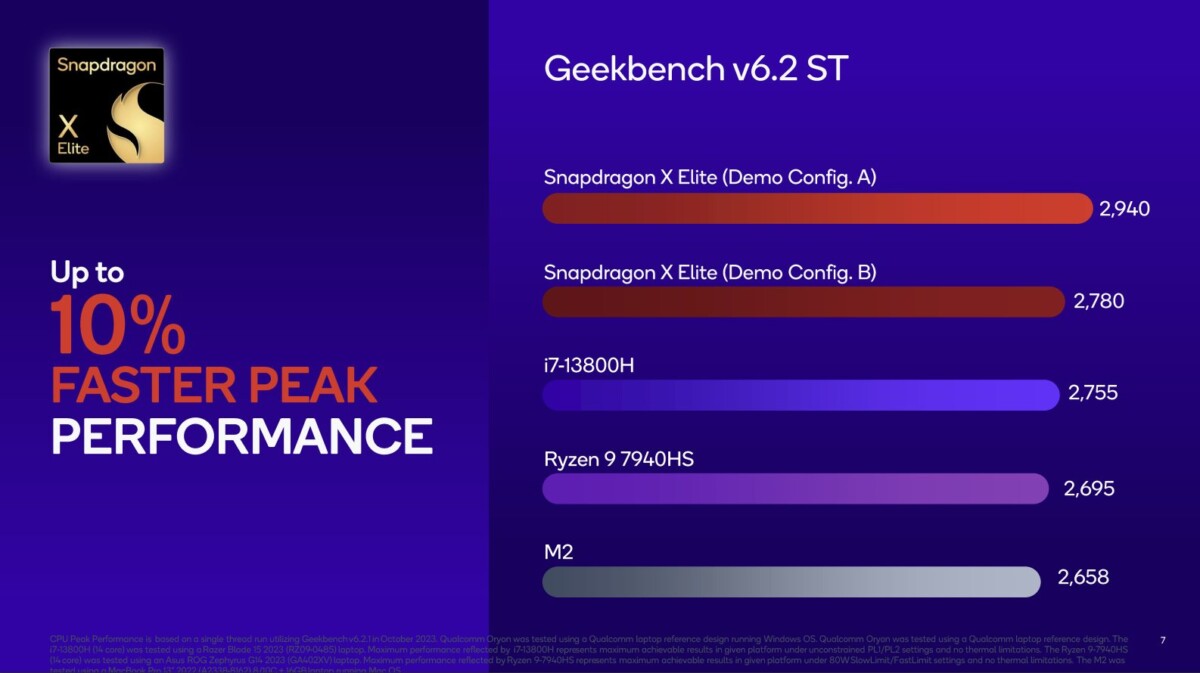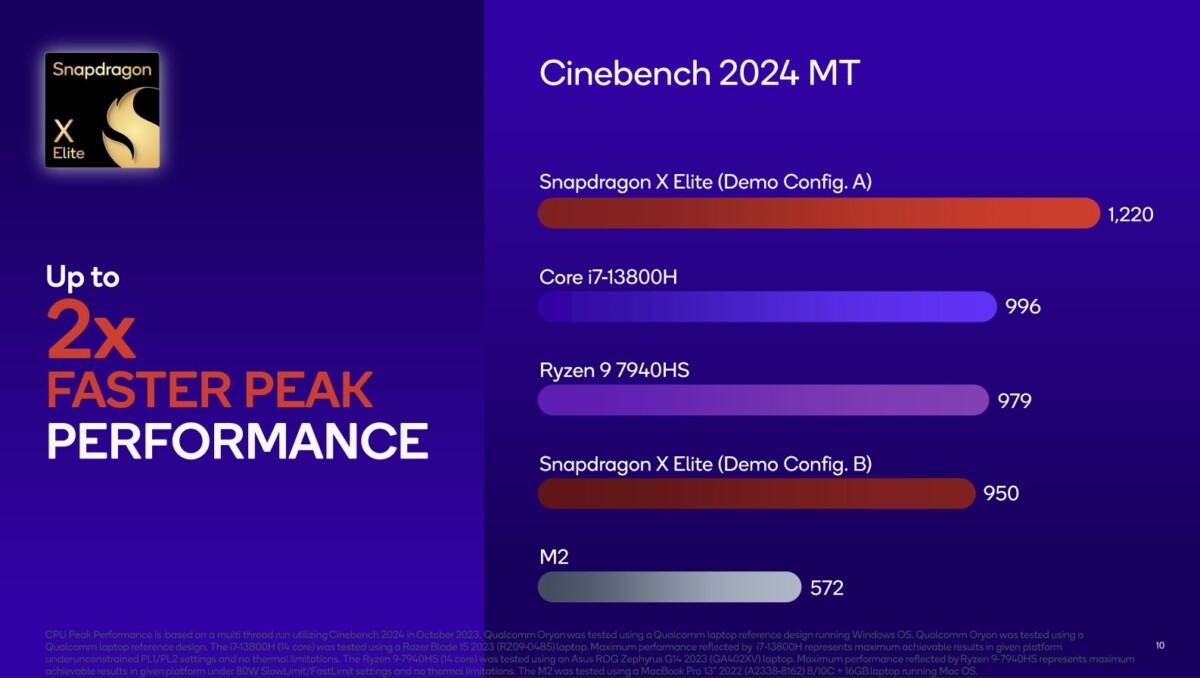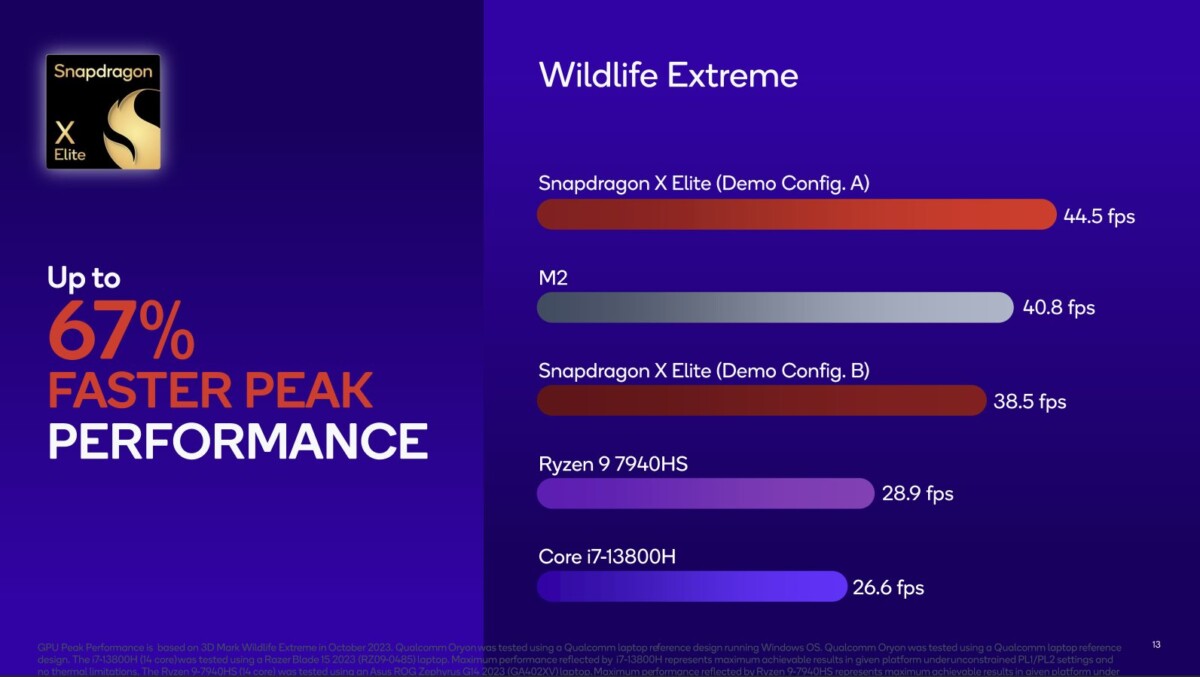Journalists were able to try out the first laptop PCs developed by Qualcomm and equipped with its new Snapdragon X Elite chip. The results show a very efficient chip.
After several years of teasing, Qualcomm has finally lifted the veil on its first chip designed for the PC thanks to a brand new Oryon architecture: the Qualcomm Snapdragon X Elite. Several brands should offer laptops equipped with this chip in 2024. For now, journalists have been able to try it on two reference machines created by Qualcomm.
The brand chose its schedule well by lifting the embargo on these first tests a few hours before the Apple conference. The latter should unveil its range of Apple M3 chips which could well take back the crown that Qualcomm is stealing.
A very powerful chip in benchmarks
The journalists present at the Snapdragon Summit were able to run a series of benchmarks on PCs prepared by Qualcomm.
Two configurations were demonstrated: a first “Config B” laptop PC with a 14-inch OLED screen with a chip tuned to a TDP of 23W. The other is a more efficient “Config A” PC with a chip set to 80W and a 16.5-inch screen. In other words, PCs that would in some way compete with Apple’s MacBook Pro. In both cases, there is active ventilation.

Several media like Anandtech have published the results of their own benchmark sessions. The results are aligned with those put forward by Qualcomm. This is rather logical since the brand controls the testing environment here. We will have to wait to see the first PCs marketed so that each journalist can carry out their own tests. But it is already interesting for the press to be able to see the performance of the machines in the selected benchmarks.
On single-core, Qualcomm’s new chip comes out with a small lead over its direct competitors like the Apple M2. However, it must be remembered that the latter is Apple’s most accessible chip. We can imagine that an Apple M2 Pro or M2 Max would therefore retain its first place.

On the test with Cinebench, the gap widens greatly with Apple. This is a multi-core test that pushes the Qualcomm chip to give the maximum of its 12 high-performance cores. As a reminder, the Apple M2 integrates 8 CPU cores, including only 4 high-performance cores.

The Wilflife Extreme test highlights the graphics part of the SoC. Here, Apple and Qualcomm are playing an equal game well ahead of what AMD and Intel offer on their SoCs. However, it would be interesting to be able to compare them with machines equipped with dedicated graphics chips, in particular Nvidia’s GeForce.
The limits of this communication plan
Despite a very impressive demonstration on paper, certain things must be put into context. First of all, the first PCs equipped with a Snapdragon to hear about Apple M4 chips. Likewise, AMD and Intel should have time to prepare a new generation of chips for this Snapdragon X Elite.
Furthermore, the main obstacle to the adoption of a machine running Snapdragon X Elite today remains the lack of adaptation of Windows to ARM platforms. The chips developed by Qualcomm are very sophisticated, but it is simpler to use a Windows laptop PC equipped with an AMD or Intel chip.
Still, the first results of this Snapdragon X Elite are positive. We are all the more impatient to get our hands on the first PCs equipped to note for ourselves even if we can finally discover Windows putting a real foothold in this transformation which has been so successful for Apple.
